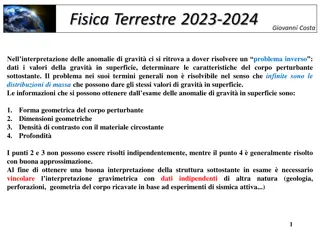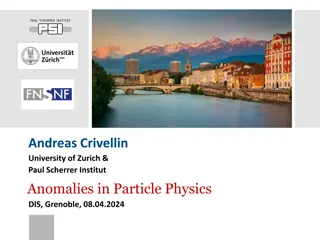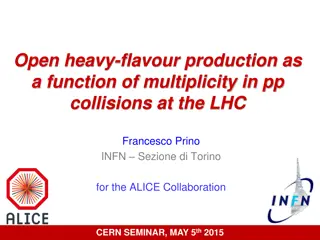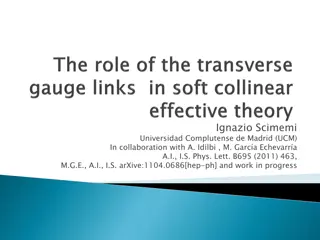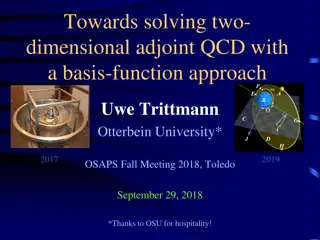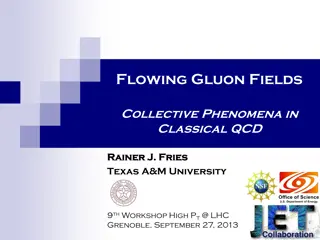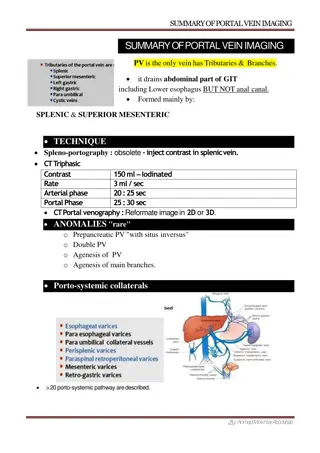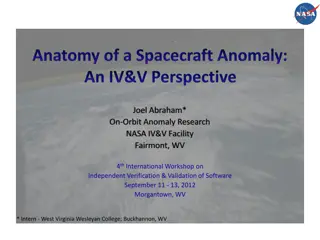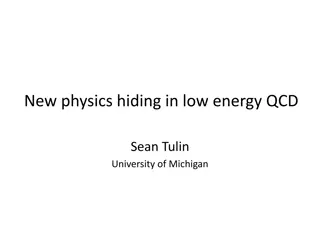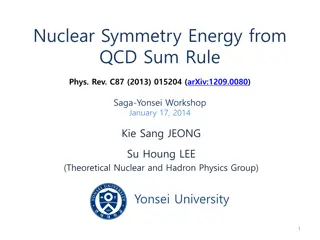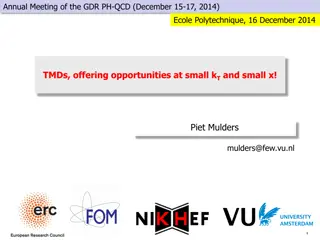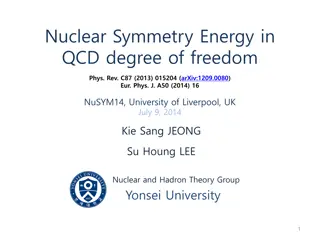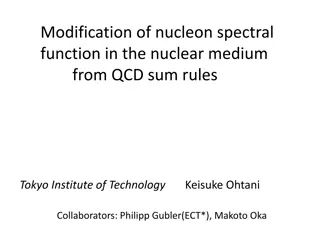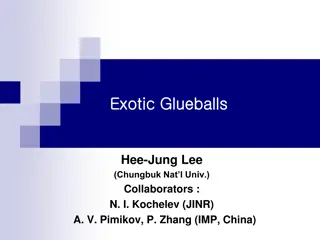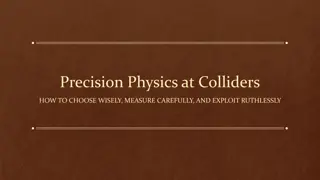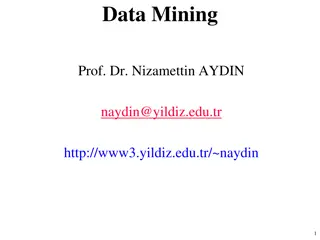Pinning Down QCD Contributions to Flavour Anomalies
This study delves into flavour anomalies, exploring the implications of the observed deviations and the role of QCD effects. Through detailed analyses of transition matrix elements and dressed vertices, the investigation sheds light on the potential influence of new particles outside the Standard Model. The Bethe-Salpeter equations are employed to comprehensively evaluate the contributions of QCD to flavour-changing neutral currents. The research aims to enhance the understanding of flavour physics by considering quarks top and bottom and determining transition form factors.
Download Presentation

Please find below an Image/Link to download the presentation.
The content on the website is provided AS IS for your information and personal use only. It may not be sold, licensed, or shared on other websites without obtaining consent from the author.If you encounter any issues during the download, it is possible that the publisher has removed the file from their server.
You are allowed to download the files provided on this website for personal or commercial use, subject to the condition that they are used lawfully. All files are the property of their respective owners.
The content on the website is provided AS IS for your information and personal use only. It may not be sold, licensed, or shared on other websites without obtaining consent from the author.
E N D
Presentation Transcript
Pinning down QCD contributions to flavour anomalies Jo o Galupa and Pau Petit
Flavour anomalies ?(?+ ?+?+? ) ?(?+ ?+?+? )= 1 ? = LHCb found the ratio differed from 1 with 3.1 [1] Could be indicative of new particles outside the SM, but could also come from residual QCD effects [1] LHCb Collaboration: R. Aaij et al., Nature Phys. 18 (2022) no. 3, 277 282 ?+ ?+ ?+ ?+ Figure 1: Transition matrix elements of &
Flavour changing neutral currents Figure 2: Dressed vertex between s and d quark
Bethe-Salpeter equation I Figure 3: Full dressed vertex between s and d quark, considering QCD contributions ?2 ?3 ? ? = 1 + ? + + + . . . 1 ??= = 0+ ??0 ? ? = 1 + ??(?) 1 ? ?=0
Bethe-Salpeter equation II 0 ?? where ??= ???
Bethe-Salpeter equation IV ?? ? ??,??,??,?? ?? ? ??,??,??,?? for the upper block for the lower block
Results I a) Only photon vertex [2] b) Photon and W vertices c) All vertices included Figure 4: Comparison of the dressing function g(2) versus S1, with different vertices included [2] G. Eichmann, H. Sanchis-Alepuz, R. Williams, R. Alkofer, and C. S. Fischer, Prog. Part. Nucl. Phys. 91 (2016) 1 100
Results II a) Only photon vertex [2] b) Photon and W vertices c) All vertices included Figure 5: Comparison of the dressing function f(4) versus S0, with different vertices included [2] G. Eichmann, H. Sanchis-Alepuz, R. Williams, R. Alkofer, and C. S. Fischer, Prog. Part. Nucl. Phys. 91 (2016) 1 100
Results III Figure 6: Comparison of the dressing function g2 versus S1, with
What is next? Take into account quarks top and bottom; Implement our work into the calculation of an actual observable: ? ? ? ? And get their transition form factors.


